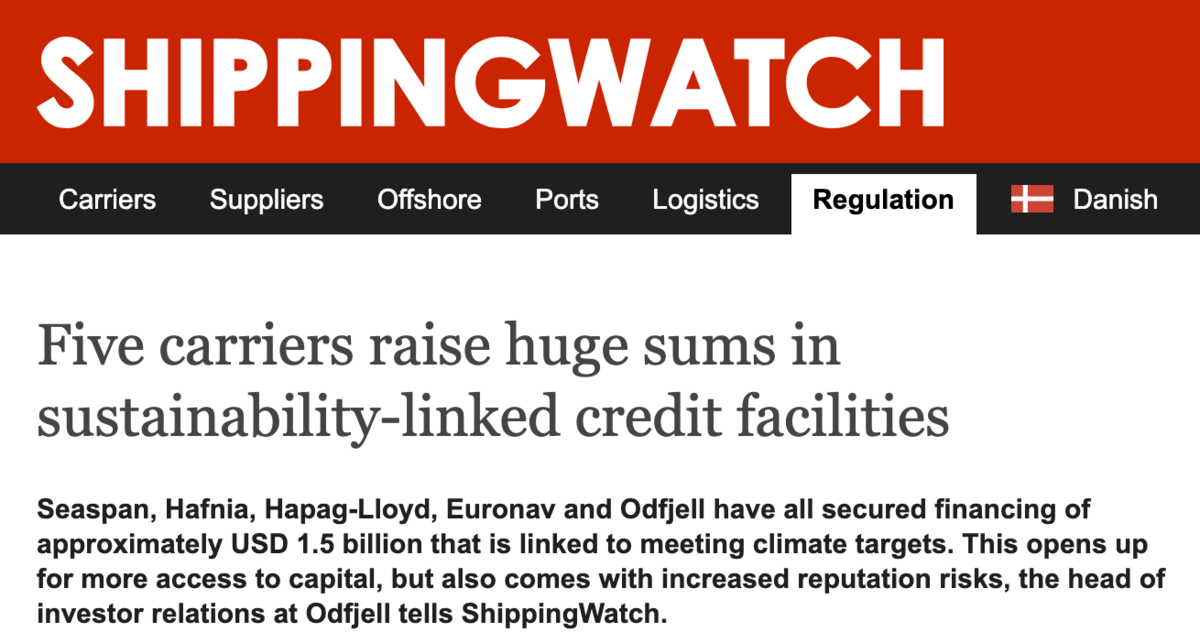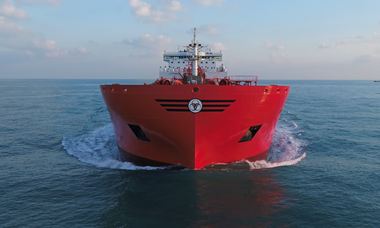The below are excerpts of an article in ShippingWatch, published July 27, 2021. Written by Dag Holmstad. English edit by Christoffer Østergaard.
Since the turn of the year, five major carriers have secured sustainable financing of approximately USD 1.5 billion, according to an estimate produced by ShippingWatch.
This is a type of financing where carriers receive certain benefits, but in turn have to deliver on specific climate targets, such as increasing the energy efficiency of their fleets or reducing their carbon intensity towards 2030.
Should the carriers fail to meet these targets, which are tied to sustainability-linked bonds or bank loans, for instance, it could trigger higher interest rates, critical headlines in the media and damage to their reputation.

“We expect that sustainability-linked bonds such as either bank loans or bonds will increase in the years to come, as investors and banks increase their focus on the shipping industry's achievement of the climate goals".
Bjørn Kristian Røed, VP Corporate Analysis and IR
In January, the Norwegian chemical tanker carrier was one of the first in the shipping industry to issue bond loans tied up with specific climate and sustainability targets. The carrier needed to refinance its debt.
The move was well received by investors, and Odfjell managed to raise USD 100 million in capital.
Odfjell has converted to sustainable bank loans
Since then, Odfjell also converted USD 120 million worth of bank debt to sustainable bank loans, which also hinge on the sustainability and climate targets being met.
Out of Odfjell's total debt of USD 1.2 million, 18 percent are now tied up with sustainability targets.
"There are more benefits to using sustainability-linked bonds or bank loans. We definitely have access to more capital as more investors that value sustainability come forward, and we've also achieved a satisfactory loan interest. The downside could be that we run the risk of damaging our reputation publicly if we, for instance, fail to meet one or more goals, even if we have good explanations for this."
Bjørn Kristian Røed
The sustainability-linked bond of USD 100 million involves an annual NIBOR rate of 5.75. The loan is set to mature in January 2025.
Failure to meet climate targets entails higher interests
"We secured a competitive interest rate on the bonds, and the potential upside for the investors is that if we, contrary to expectations, fail to meet all the sustainability targets, they'll receive 0.25 percent more in interest".
The chemical tanker company has promised bond investors, banks, shareholders and the public that the carrier in turn aims to reduce its carbon intensity by 50 percent in 2030 compared to 2008 levels.
The sustainability target pertains to the fleet's average efficiency ratio (AER), which measures the carbon emissions per tonne/mile of the vessels.



